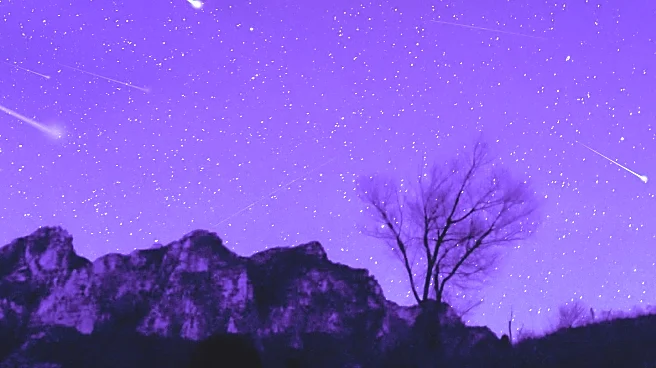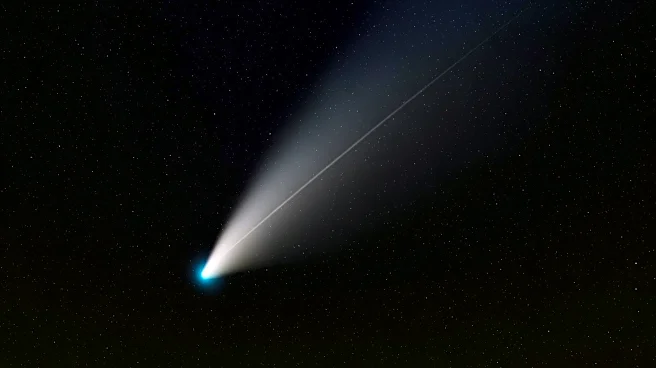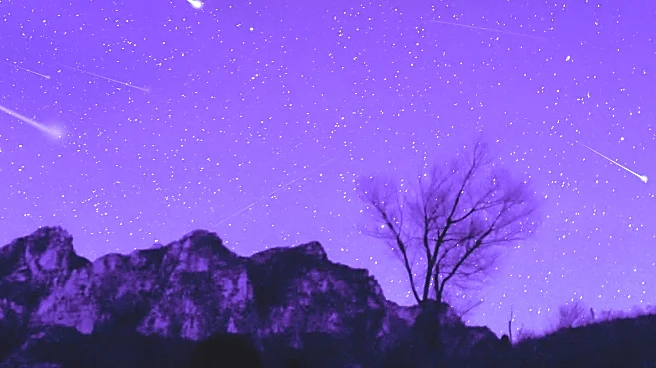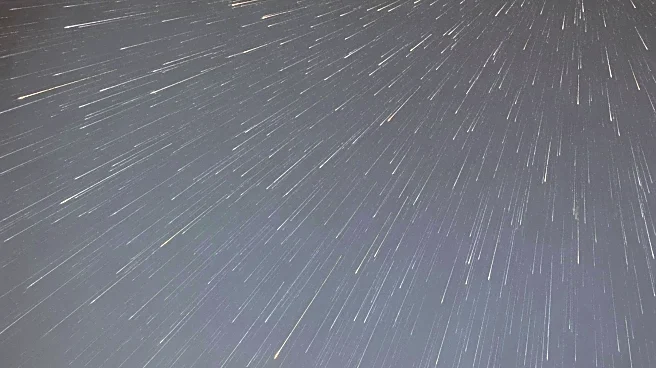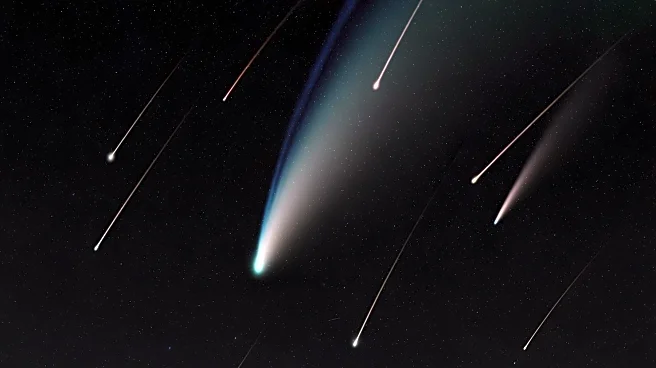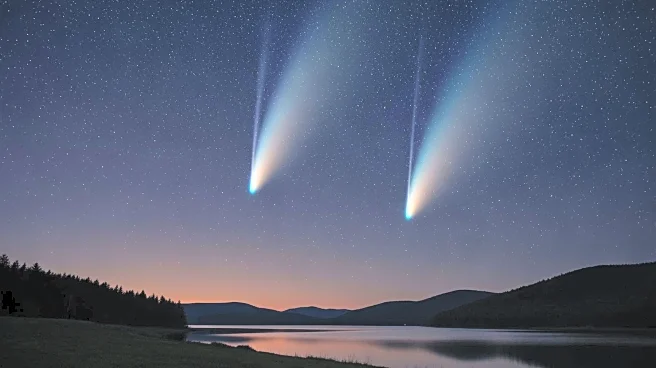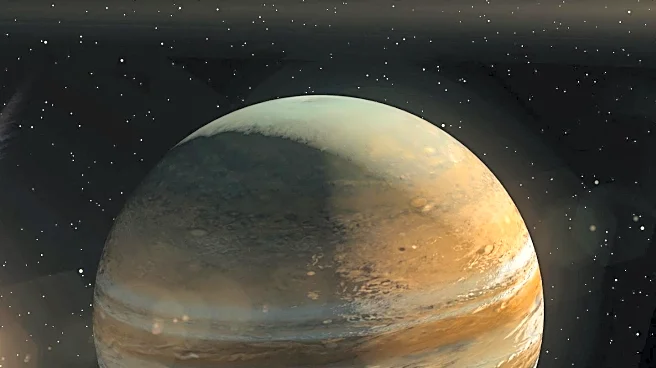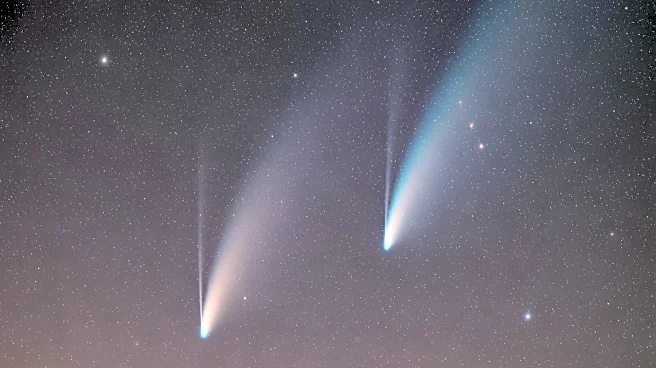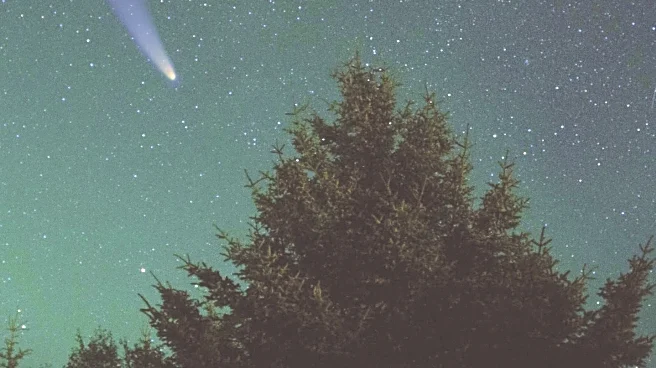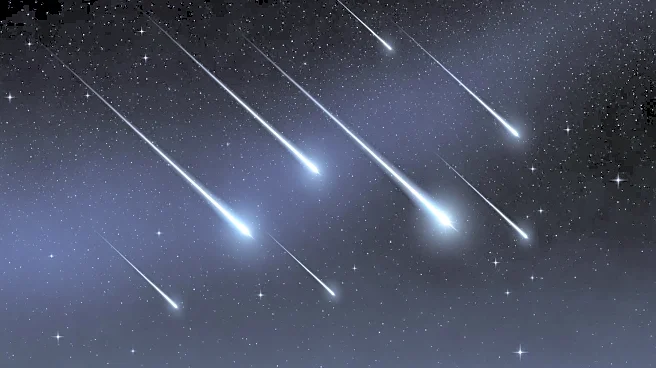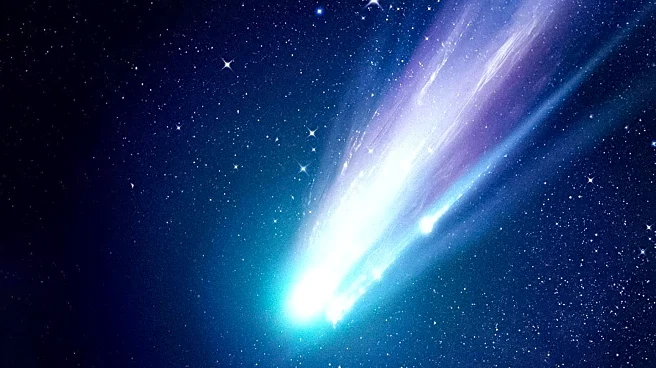What's Happening?
The Pacific Northwest is experiencing a celestial spectacle with the Orionid meteor shower peaking alongside visibility of Comet Lemmon and Comet SWAN. The Orionids, known for their brightness and speed,
are expected to peak on October 22-23, offering a stunning display of meteors. Comet Lemmon, passing closest to Earth at 56 million miles, is visible in the northwest sky, while Comet SWAN, at 24 million miles, can be seen near the eastern horizon before dawn. The Zodiacal Light, a rare phenomenon resembling a pillar of light, is also visible in the region, adding to the cosmic display.
Why It's Important?
This convergence of celestial events provides a rare opportunity for residents and visitors in the Pacific Northwest to engage with astronomy. It highlights the region's potential as a prime location for stargazing and scientific observation, potentially boosting local tourism and educational activities. The visibility of multiple comets and meteor showers underscores the dynamic nature of the cosmos and encourages public interest in space science. It also emphasizes the importance of preserving dark sky areas to facilitate such observations.
What's Next?
As the meteor shower continues, enthusiasts are encouraged to prepare for viewing with appropriate gear and to seek out locations with minimal light pollution. The visibility of Comet Lemmon and Comet SWAN will continue to offer opportunities for observation and photography. Astronomy groups may organize events to educate the public and foster community engagement. The Zodiacal Light will remain visible until early November, providing additional chances for observation.
Beyond the Headlines
The event highlights the need for awareness and action against light pollution, which can hinder astronomical observations. It also serves as a reminder of the vastness and complexity of the universe, inspiring curiosity and exploration. The convergence of these phenomena may lead to increased interest in amateur astronomy and scientific research.
